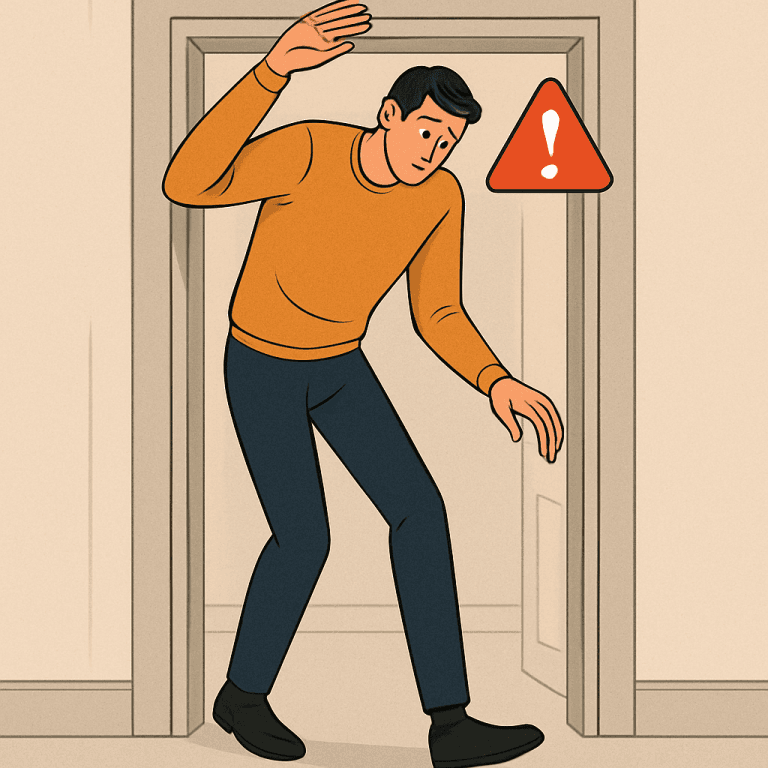Public Transport Frustrations: The Tall Person’s Guide to Survival

Let’s be honest—you’ve probably faced this before. You step into a packed bus or subway, and immediately realize: this space wasn’t built for you. Knees pressed into the seat in front of you, head almost grazing the roof, and the constant battle for personal space.
For tall people, public transport can feel like a daily endurance test. But there are ways to make it better—and this guide is all about helping you commute more comfortably without sacrificing your sanity.
Why Public Transport Is a Challenge for Tall People
Public transportation systems are designed for efficiency and to fit as many people as possible—not necessarily to accommodate all body types.
As a tall individual, you’re likely facing:
Limited legroom on buses and trains
Low ceilings that make standing upright a challenge
Narrow seats with zero side room
Awkward stares from people wondering how you even fit
And let’s not forget those tiny tray tables and tight aisles.
Best Survival Strategies for Tall Commuters
Here’s how you can stay sane and save your spine on your daily journey.
1. Know the Best Seats on Each Mode of Transport
Buses: Aim for the seats right behind the driver or at the very back where there’s usually more legroom.
Trains/Metro: Look for the seats near emergency exits or flip-down seats—they often come with extra space.
Trams & Subways: Stand in the middle of the car where ceilings are typically higher and space is roomier.
2. Avoid Rush Hour Like the Plague
Commuting off-peak means less crowding and more chances of finding space to stretch out.
Bonus: You won’t accidentally head-butt anyone with your backpack.
3. Sit Sideways if You Must
If legroom is nonexistent, turn your body slightly or angle your legs into the aisle (just try not to trip anyone).
It’s not glamorous, but your knees will thank you.
4. Use a Backpack with Built-in Cushioning
Some taller folks lean forward more when standing—this strains your back.
A supportive backpack can balance your posture and give your spine a break.
5. Pick the Right Clothing
Opt for clothes with flexible, breathable fabrics.
Tighter public spaces mean more friction and awkward stretches—dress in a way that moves with you.
Must-Have Items for Tall Commuters
Keep these on hand to make your ride smoother:
Portable seat cushion (especially on long train rides)
Foldable footrest or leg sling for buses
Noise-canceling headphones to drown out the chaos
E-reader or Kindle—easier to use than a laptop in cramped spaces
Slim water bottle to stay hydrated without taking up bag space
Tall-Friendly Transport Options (If You Can Choose)
Some cities and transit systems are better than others for tall people. If you live in or visit a place with options, here’s what to go for:
Double-decker buses: More headroom on the top level
Light rail systems: Usually newer, cleaner, and more spacious
Express commuter trains: Designed for longer rides, so they often have better seats
If you’re using ride-sharing apps, look for vehicles with large interiors (SUVs or XL cars). They’re worth the few extra bucks.
What Not to Do (Tall People Edition)
Don’t crouch for long periods. It puts strain on your spine. Instead, stand tall or squat temporarily.
Don’t force yourself into a tight seat. If it looks like torture, it probably is. Wait for a better one if you can.
Don’t be afraid to stand. Standing gives you more flexibility to shift positions and move around.
Key Takeaways
Public transport isn’t designed for you—but you can still make it work.
Strategic seat choices and timing are your best tools.
Standing can often be better than suffering in a tight seat.
Pack smart and dress for the space—you’ll feel more at ease.
FAQ
Q: Which part of the bus has the most legroom for tall people?
A: The very back or behind the driver are usually your best bets.
Q: Should I always avoid the middle seat on public transport?
A: Definitely. It’s usually the tightest. Go for aisle or window (if they have more leg space).
Q: Are trains better than buses for tall passengers?
A: Yes. Most trains offer more space to stand, stretch, and walk around compared to buses.
Final Word
Commuting isn’t always fun—but with the right mindset and a few smart choices, you can turn daily frustration into tolerable routine. You’re not alone, and you’re not asking for much—just a seat that fits.






